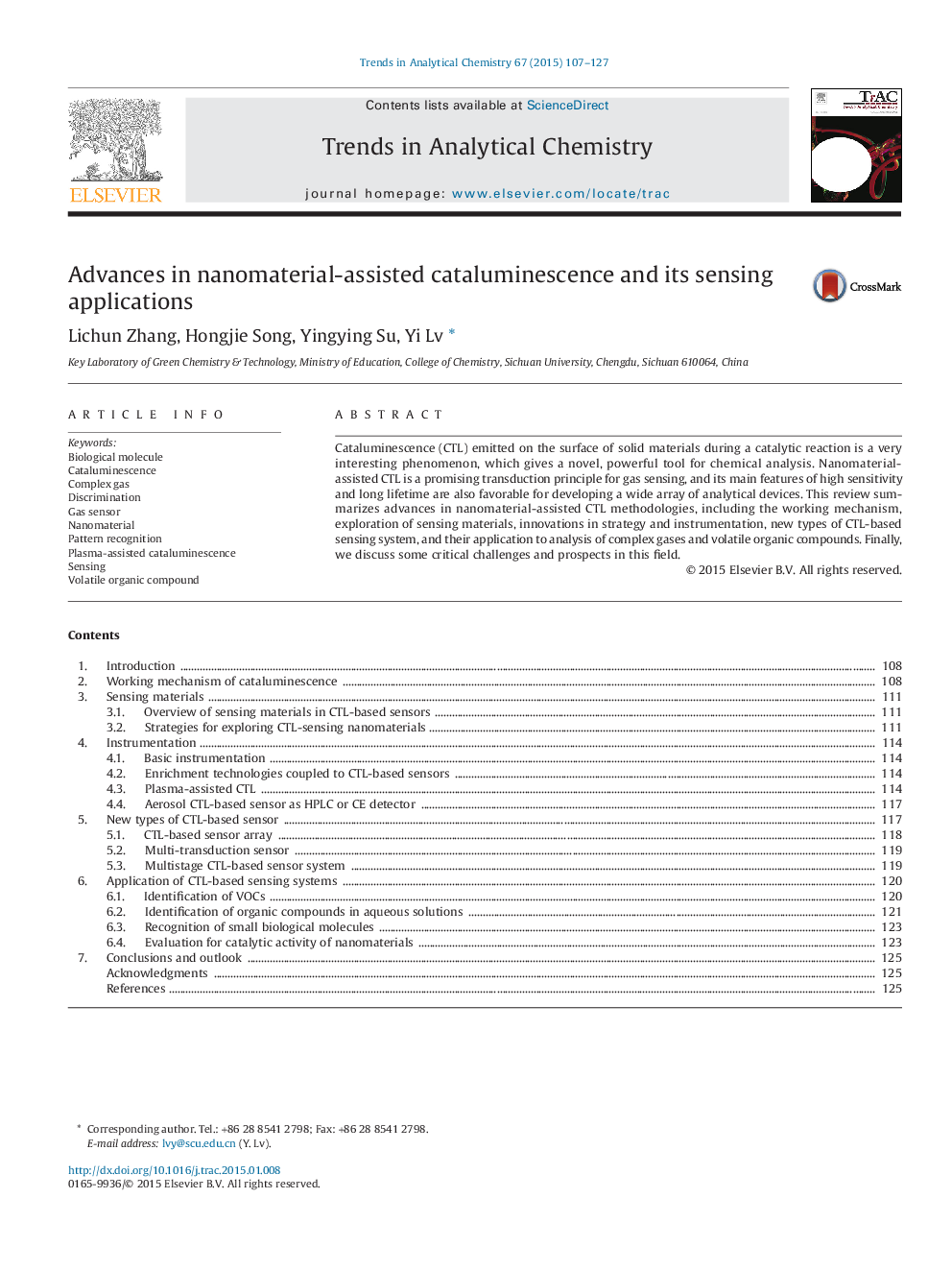| Article ID | Journal | Published Year | Pages | File Type |
|---|---|---|---|---|
| 1247862 | TrAC Trends in Analytical Chemistry | 2015 | 21 Pages |
•Nanomaterial-assisted cataluminescence is a promising for gas sensing.•Advances in nanomaterial-assisted cataluminescence methodologies.•We explore sensing materials, strategies and instruments.•Cataluminescence detects complex volatile organic compounds.
Cataluminescence (CTL) emitted on the surface of solid materials during a catalytic reaction is a very interesting phenomenon, which gives a novel, powerful tool for chemical analysis. Nanomaterial-assisted CTL is a promising transduction principle for gas sensing, and its main features of high sensitivity and long lifetime are also favorable for developing a wide array of analytical devices. This review summarizes advances in nanomaterial-assisted CTL methodologies, including the working mechanism, exploration of sensing materials, innovations in strategy and instrumentation, new types of CTL-based sensing system, and their application to analysis of complex gases and volatile organic compounds. Finally, we discuss some critical challenges and prospects in this field.
